Sustainability begins at home, and it starts with your home décor! Environmentally sustainable interior design is now a top prerogative for discerning home owners, and there are plenty of organic material options available that are kind to the planet and cause minimal impact.
But let’s start at the very beginning! If you’re new to this, you’ll first need to understand what the meaning of ‘sustainable’ is.
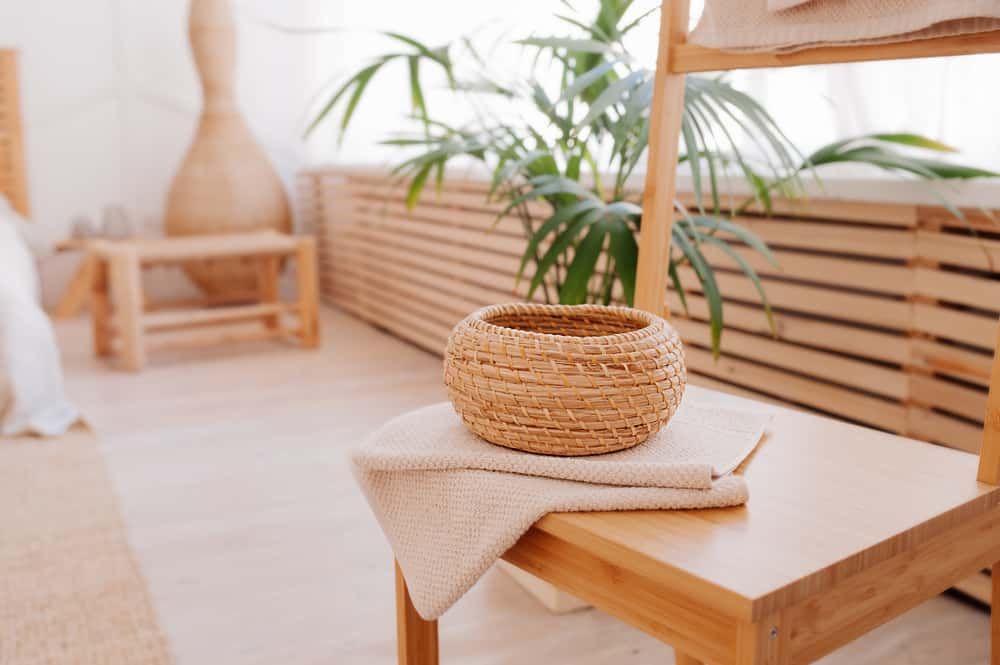
What Are Sustainable Materials?
Sustainable materials are those that are capable of being replaced by nature quicker than they are being removed. They should also be ethically sourced, that is, extracted without the use of toxic chemicals, or through practices that are in themselves harmful to the environment. If these materials are manufactured or processed in wasteful ways, then, too, they are not considered green.
The use of sustainable materials allows us to live closer to nature, and to be more mindful of the repercussions of our actions on the earth.
If you’ve chosen to go green in your home, here’s a list of sustainable materials that you can incorporate in your home, with décor ideas, tips, and more!
1. Bamboo
Bamboo is one of the fastest-growing plants in the world—some species can reach full maturity in an astonishing 90 days! Most bamboo plants can be harvested in under four years, as compared to 60 to 70 years for hardwoods. What’s more, bamboo plants do not strip nutrients from the soil and are resistant to most pests, which means that pesticides and fertilisers are not required.
This makes bamboo a sustainable option for use in furniture, blinds, tabletops, décor accessories, and even as roofing material or flooring. Manufacturers are even experimenting with bamboo as the base material to create furnishings—and while it is not as yet widely available, fabric that is made of processed bamboo can be used to make highly soft, hypoallergenic linen, towels, and sheets.
Here, this stunning lamp is hand-crafted out of strips of bamboo, woven together to create lovely patterns.
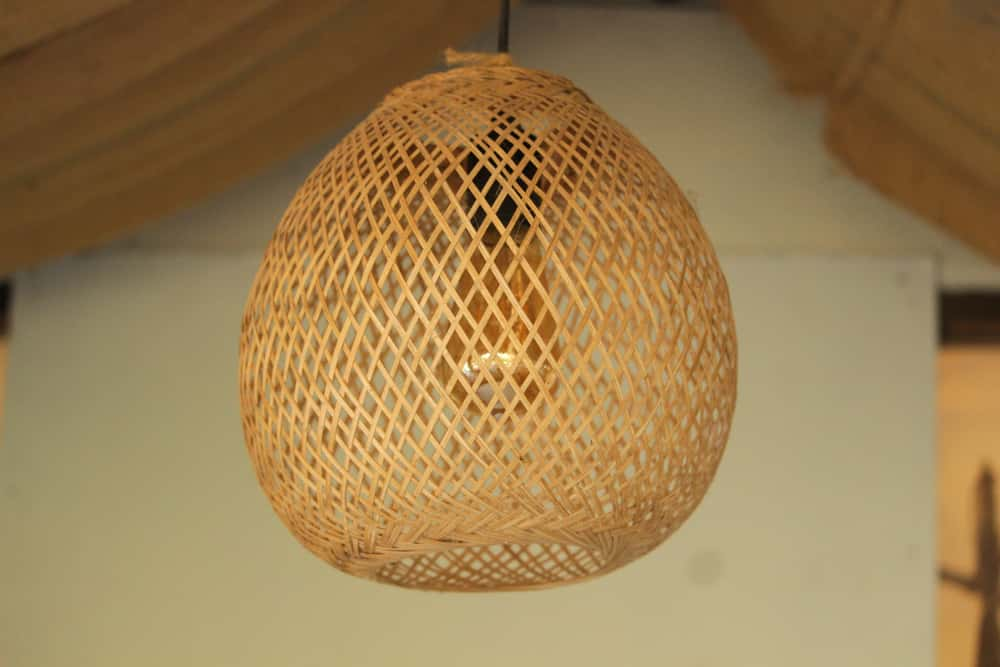
Furniture made of bamboo is far more resistant to wear and tear than traditional hardwoods. This cot, crafted out of bamboo, has high tensile strength and is actually stronger than steel! The side table is also fashioned out of bamboo and ranks high on sustainability too.
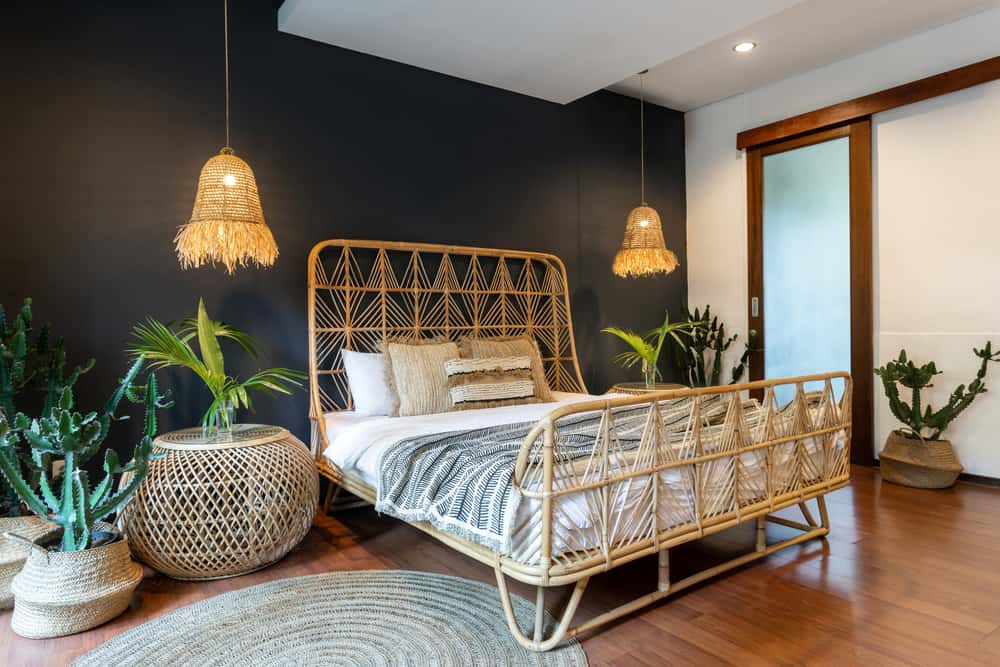
2. Glass
Every material choice you make has an impact on the environment. Glass is considered to be the most eco-friendly material for buildings, for many reasons. The more glass that is used during construction, the lighter and airier your home will be. Most importantly, it is endlessly recyclable; which means that whatever form or shape it is in, it can always be scrapped and reused completely. Recycled glass can be used in your home interior in the form of countertops or tabletops, shower doors, glass bricks, partitions, and so on.
In this industrial-style loft, recycled glass is used in the furniture as well as the glass partitions.
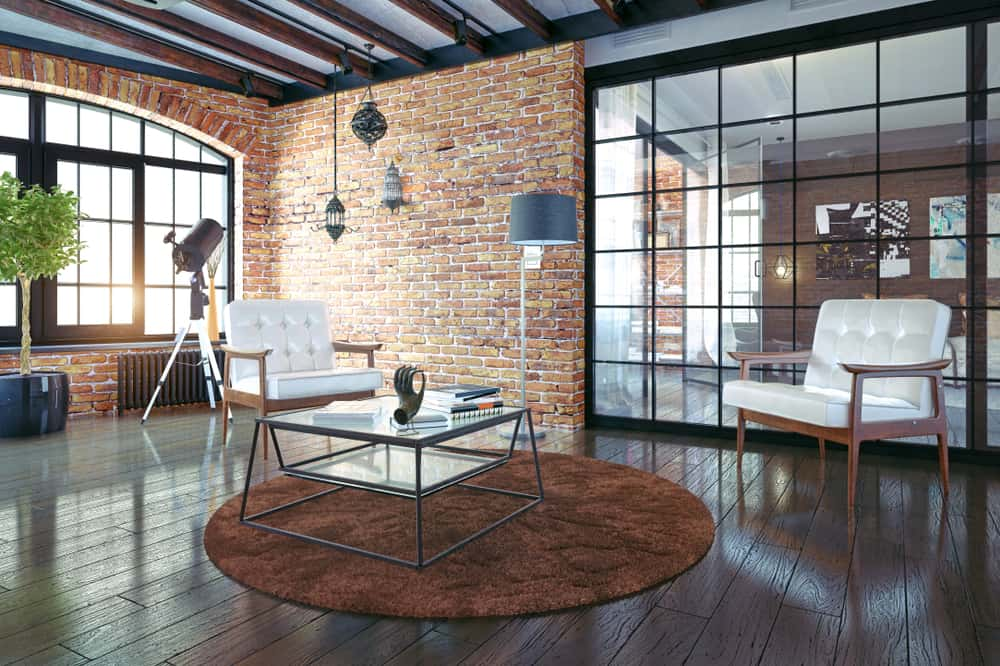
Recycled glass blocks cordon off the bedroom from the en suite bathroom, letting in plenty of light but ensuring visual privacy.
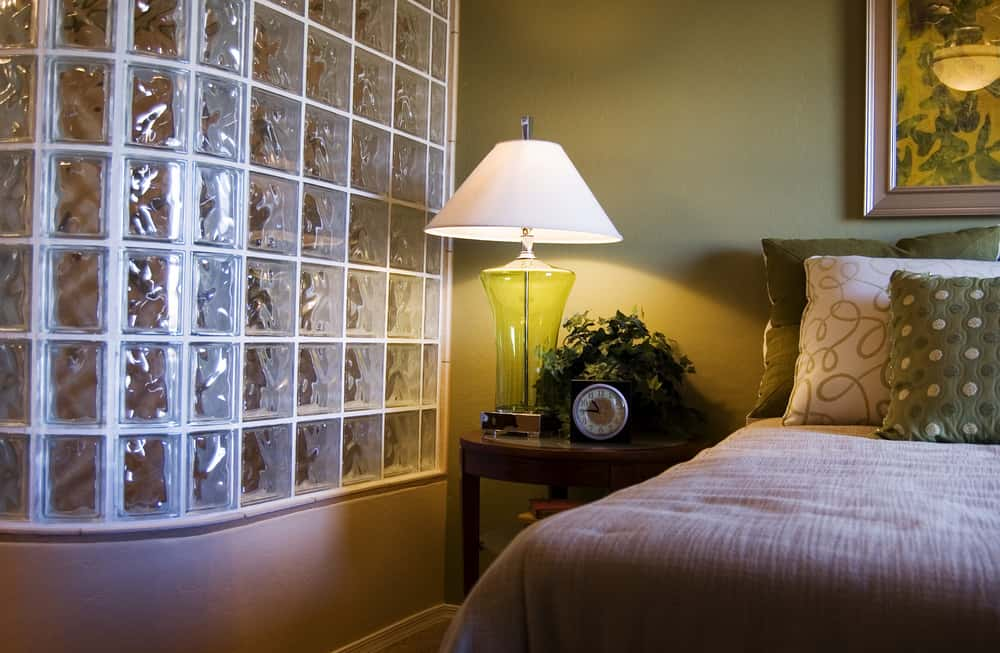
3. Jute
A sustainable fibre that is harvested from the jute plant, jute can be spun into coarse threads that are very strong. It is used to make rope, twine, or paper and is combined with softer fibres to make cloth. Jute rugs are very popular, and so are table mats and rope-wrapped furniture. The rope is rough but very strong and is often used to make macrame wall hangings, lampshades, and hammocks. Jute is completely biodegradable and is manufactured using eco-friendly processes.
Here, the hand-knotted jute rug has been left au naturel, with no dyes or other additives. The golden fibres of the jute blend well with any style of décor or colour palette. It is not very soft or comfortable underfoot, however, and this is its main drawback!
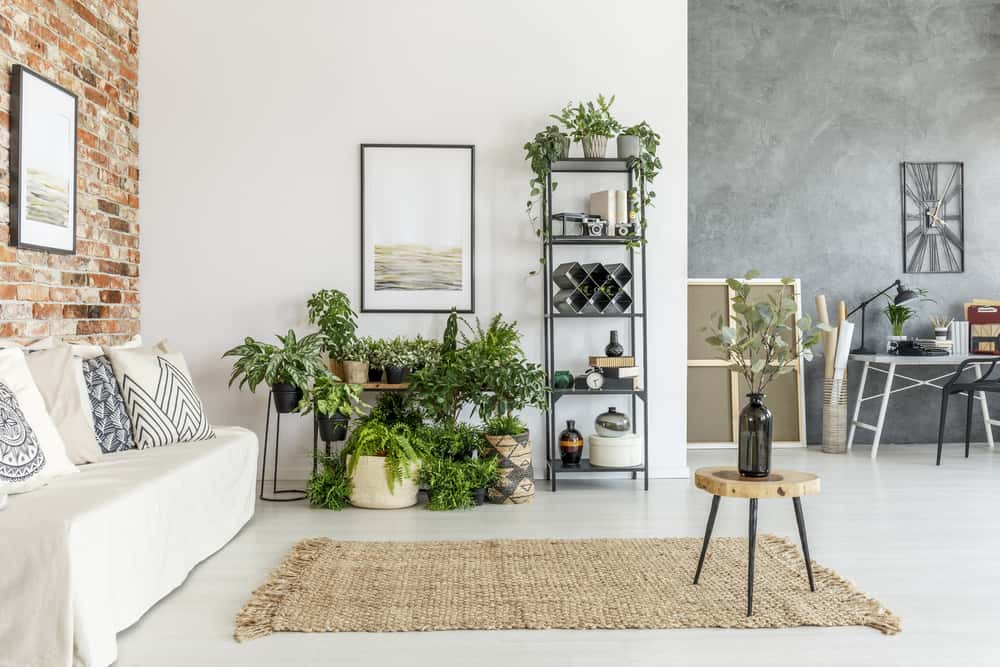
Jute ropes are used in macrame craft—the elegant art of knotting ropes to make lovely pot holders, wall hangings, and more!
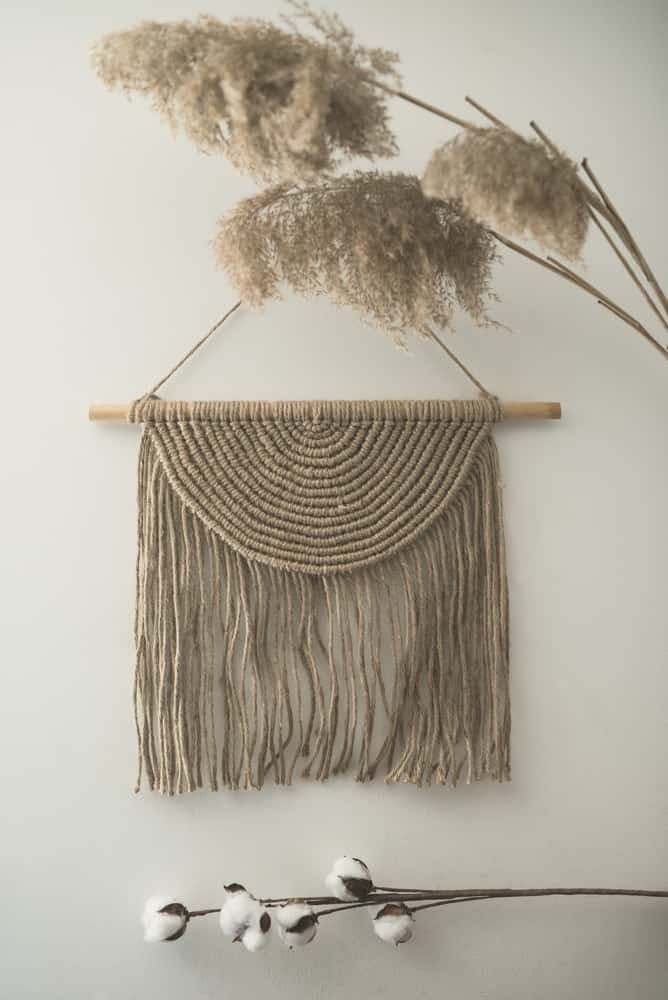
4. Organic Cotton
Organic cotton is ethically farmed using ways that do not harm the earth, and it is completely pesticide and toxin-free. Organic cotton addresses environmental concerns using alternative green practices—by using crop rotation methods that do not deplete nutrients from the soil, for instance, and by using only natural pesticides instead of chemicals.
Organic cotton can be used in curtains, rugs, bedsheets and bedcovers and upholstery. While it costs more than regular fabric, it is well worth the price you pay!
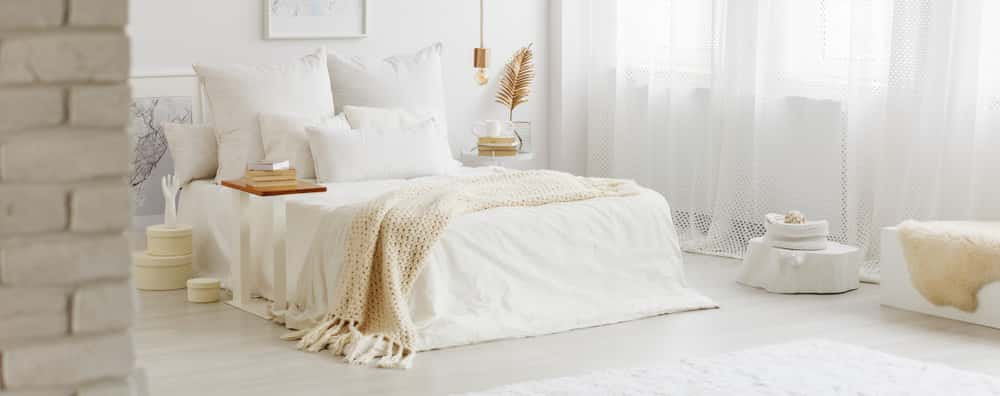
5. Terrazzo
Terrazzo, popularly known as ‘mosaic’, uses scraps of marble, quartz, granite or recycled glass chips, poured with a cement binder to form a composite material that can be used for flooring, wall cladding or countertops. It uses materials that emit zero VOCs (volatile organic compounds) and makes good use of waste scraps that would otherwise be discarded—making it one of the most environmentally friendly material options for floors!
Terrazzo gets extra points for its high durability, and it is also completely waterproof, non-porous, and low on maintenance—making it a popular option for kitchens and bathrooms.
Read also: Mosaic Vs Terrazzo: What is the Difference?
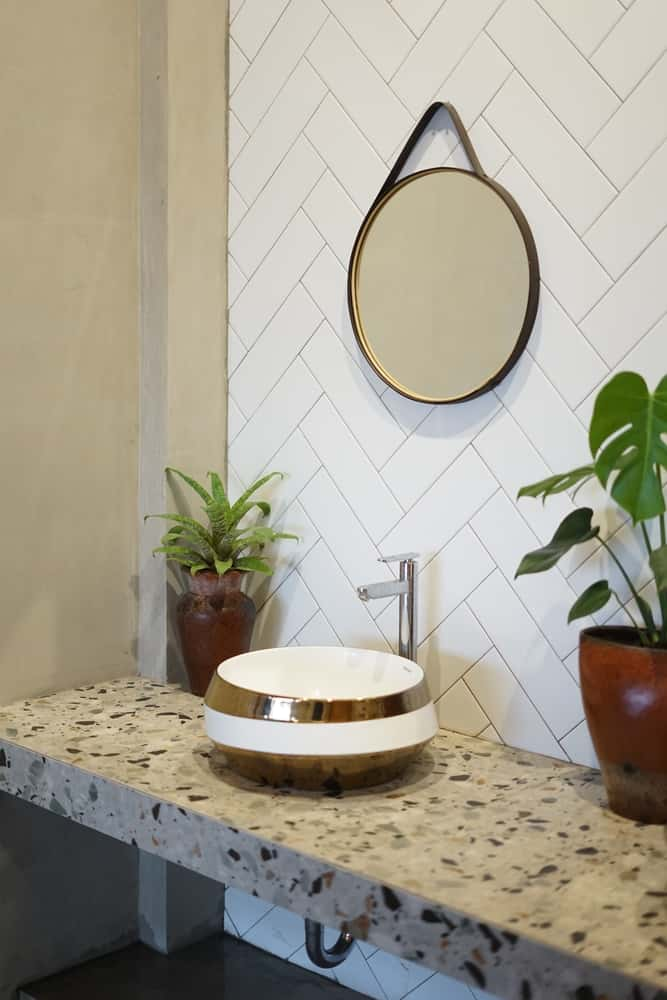
Creating a truly sustainable home requires a deep understanding of green practices. You’ll need to read up a lot, carry out your own research and talk to other like-minded homeowners. Build your knowledge about sustainability, so that you can make a conscious shift to an eco-friendly lifestyle. Using sustainable organic materials in your home décor is just the first step, but it’s a great start!
Want to know more about sustainable materials in home décor? Make informed décor choices in your home, with a little help from HomeLane!




